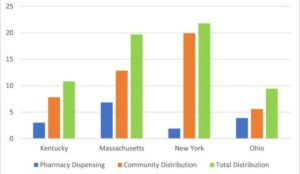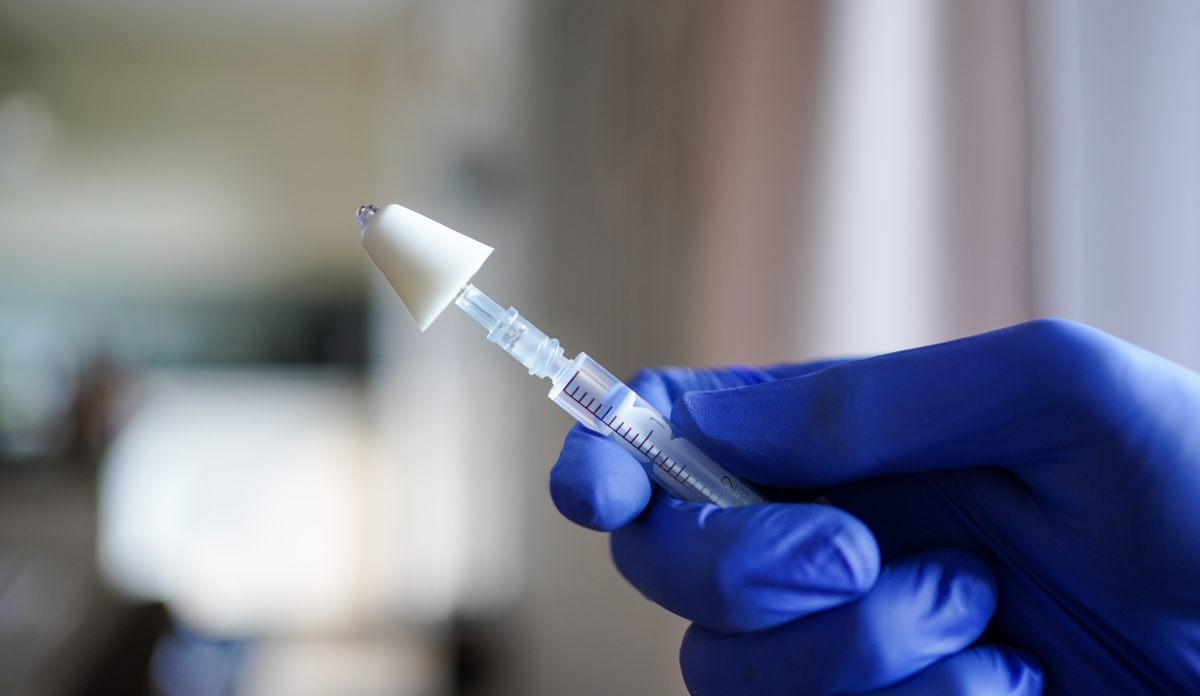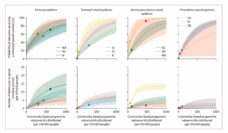Illegally manufactured fentanyl claims 150 lives daily and is a major contributor to the escalating opioid overdose death toll in the United States. The communities devastated by this continuing loss have turned to naloxone, a medication that can prevent a fentanyl death. When administered in a timely manner, it reverses the effects of opioids. Naloxone is critical for saving lives, but isn’t always available to those with the highest risk or the greatest willingness to be prepared if an overdose is happening nearby.
Some states have passed laws to allow residents to get naloxone without a prescription. However, many states have barriers to getting naloxone into the hands of those who want and need it.
Bohler and colleagues investigated actions taken by individual states to make naloxone more available, drawing upon state-wide data from the HEALing Communities Study. They highlighted two states, Kentucky and Ohio, with laws that impede naloxone distribution, and two states, New York and Massachusetts, with laws promoting it.

The figure above shows the rates of naloxone dispensing in pharmacies, community distribution, and total distribution per 1000 residents in states with high and low naloxone accessibility in 2019. Community distribution—such as hand-outs at neighborhood sites—involves programs that provide free naloxone to individuals at risk of overdose, their family members, friends, and health care workers who might witness an overdose and want to step in to help. Pharmacy dispensing involves individuals visiting pharmacies, often to pick up other medications.
The green bars highlight the significant disparity in naloxone distribution in Massachusetts and New York compared to Ohio and Kentucky. New York has long had a comprehensive approach to providing naloxone and has over 800 opioid overdose prevention programs. In contrast, Ohio has fewer and less established community programs for opioid overdose education and naloxone distribution.
In 2021, Kentucky and Ohio had drug overdose mortality rates of 55.6 and 48.1 per 100,000 total population, while Massachusetts and New York had rates of 36.8 and 28.7, respectively. The rate of opioid overdose deaths in the United States underscores the urgent need for effective prevention strategies. The authors urge policymakers to reduce barriers hindering people from accessing naloxone, an important means to prevent opioid mortality.
Databyte via Robert M. Bohler, Patricia R. Freeman, Jennifer Villani, et al. The policy landscape for naloxone distribution in four states highly impacted by fatal opioid overdoses. Drug and Alcohol Dependence Reports, 2023.
Photo via Getty Images














